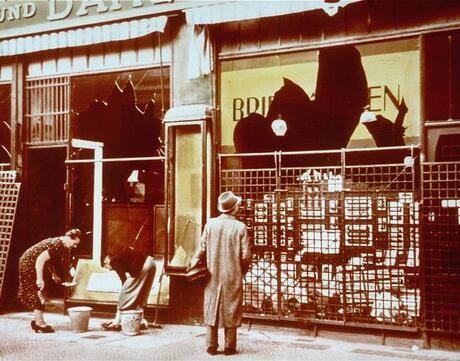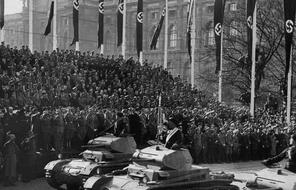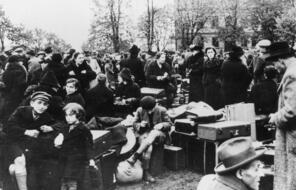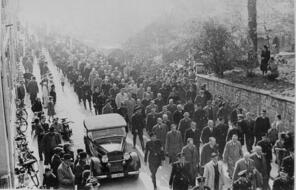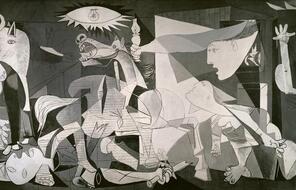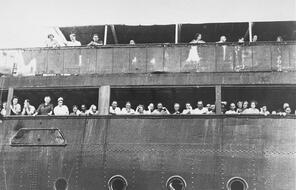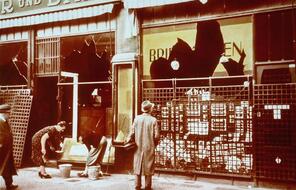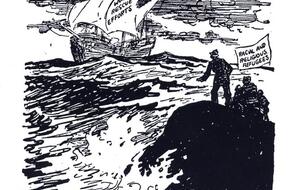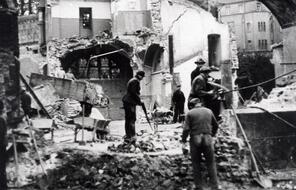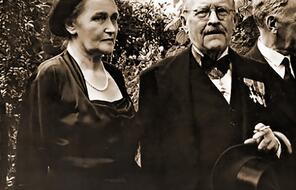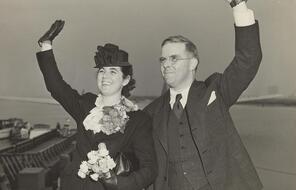While the Nazis were consolidating their power in Germany and attempting to transform German society according to their ideas about race, they were also preparing the country for war. In fact, Hitler believed that creating a “racial” state and fighting wars were firmly linked; through war, the nation would conquer new territory that would allow the German “race” to expand, and it could then grow the food and extract the resources it would need to expand even more.
Therefore, as soon as they took power in 1933, the Nazis began a program to rearm Germany—a program largely kept secret from the rest of the world in order to hide the violations of the Treaty of Versailles that resulted. This program also had the effect of increasing employment rates and improving the German economy, which was suffering during the Great Depression.
After 1935, Hitler’s efforts to rebuild the German military forces became public, and Germany began taking aggressive steps toward expanding the Third Reich across all of Europe. The first steps included annexing Austria and the part of Czechoslovakia called the Sudetenland, territories inhabited by so-called “true Germans” who Hitler believed ought to be part of the Reich. With each new step, Hitler watched closely to see what the response of the world community would be.
The German annexation of Austria and the Sudetenland increased the number of Jews affected by Nazi restrictions, while at the same time those restrictions intensified to the point that Jews were effectively removed from German public life. This meant that Germany’s aggressive steps to expand its borders touched off both an international political crisis, as world leaders scrambled to avoid war, and a humanitarian refugee crisis, as hundreds of thousands of people, mostly Jews, sought safety from the Nazis. But in the 1930s, Western nations were accustomed to the presence of persecution and discrimination against minority groups, given their histories of imperialism, slavery, discrimination, and religious persecution. Perhaps partially because of that history, the international community did not immediately deliver forceful, concrete responses in opposition to the early laws and actions taken by the Nazis. However, by the late 1930s, the persecution of Jews and others in the Third Reich was reaching new and unimaginable levels, becoming a violation of human life and dignity difficult to ignore. World leaders would soon be forced either to come up with a response or to make the deliberate choice not to intervene.
This chapter explores how the choices made by world leaders affected the lives of countless individuals, even those who lived thousands of miles and across oceans from the homes of those leaders. The ineffective international response, both to German aggression and to the refugee crisis it created, deepened the peril in which Jews in the Reich found themselves, which finally boiled over in November 1938 in what was called Kristallnacht—the most open and dangerous attacks on Jews by the Nazi regime up to that time. Yet even the widespread outrage caused by Kristallnacht was not enough to make the rest of the world act to head off disaster. Indeed, by then it may have been too late. Nevertheless, as this chapter also shows, some individuals did act, often in spite of the governments of their countries, and managed to save lives.
Examining why some people took action in defiance of Nazi Germany’s increasing aggression during these years while so many others, including world leaders and their governments, did not act provides an opportunity to talk about the range of human behavior throughout history. Within that range of human behavior are the roles of perpetrator, victim, bystander, and upstander, which can be assumed by individuals, groups, or even nations. But it can be difficult to define each term clearly. For example, under the label upstander, we often list those who take a variety of actions, including resistance and rescue. However, upstanders might also include those who are able to maintain a part of their identity despite opposition, such as people who continue to secretly practice their religious faith or others who refuse to give up hope. The term bystander can be even more complicated. In most dictionaries, it means a person who is simply “standing by” or who is present without taking part in what is going on—a passive spectator. But some scholars, like psychologist Ervin Staub, believe that even passive spectators play a crucial role in defining the meaning of events by implicitly approving the actions of perpetrators.
The choice not to act or speak up is still a choice.
It is important to recognize that it is not these labels themselves, as words, that matter; it is the way we think and talk about the actions (or inactions) of others that helps us both understand history and make connections to the choices we all make in the present. In addition, it is important to remember that individuals and groups usually do not fit into only one category. Instead, they may move into and out of these roles throughout their lives.
But studying history with these terms in mind, despite those limitations, allows us to think about the agency of individuals, groups, and nations—their ability to recognize the options available to them and make choices that impact their own lives, the lives of others, and the course of history. By reflecting on the agency of individuals, groups, and nations in historical context, we can better understand the possibility and power of the choices available to us today.
